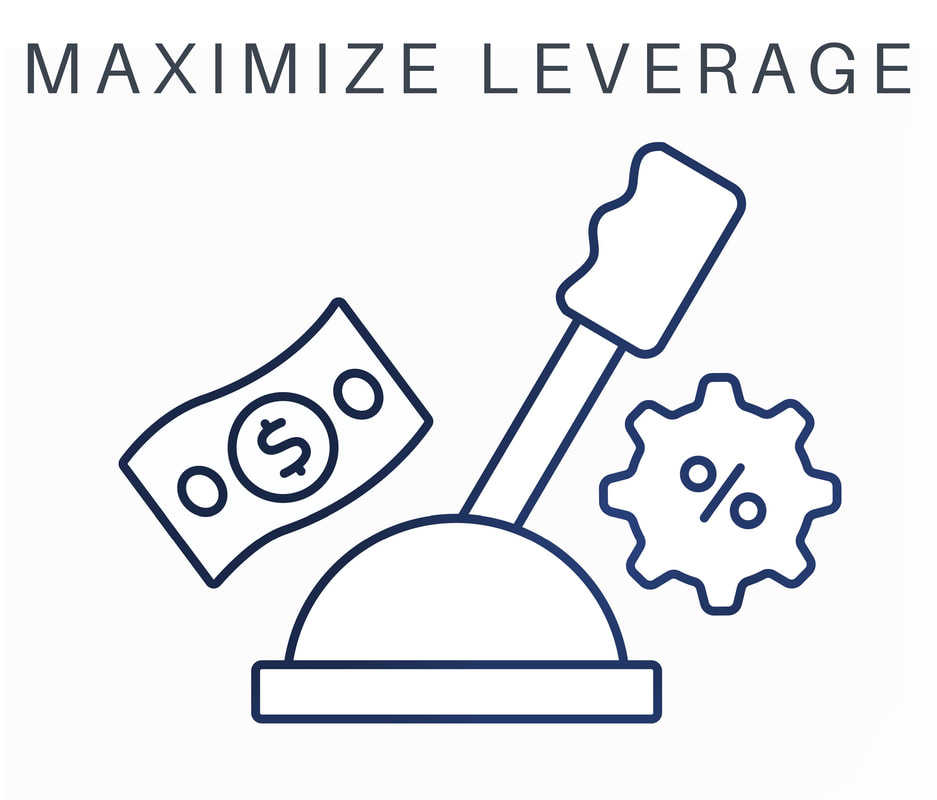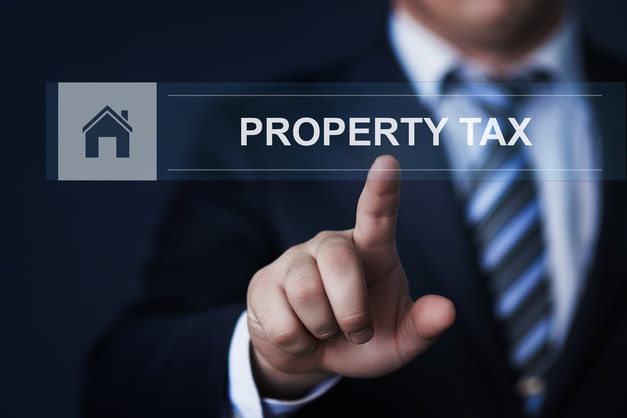Navigating Property Tax Liabilities: A Guide for Commercial Property Tenants in California6/20/2024
As tenant representatives, we emphasize that ownership quality is a critical factor when comparing similar commercial properties. The long-term ownership and management of a property often result in better maintenance and stability.
Understanding Proposition 13 and Its Impact on Property Taxes Proposition 13, passed by California voters in 1978, limits annual property tax reassessment increases to 2%. However, a full reassessment to market value occurs if the property is sold, more than 50% is transferred, or significant new construction is completed. This reassessment can significantly impact tenants, as commercial landlords typically pass on property tax costs to tenants. Lease Types and Their Implications In California, commercial leases generally fall into two categories:
Example of Property Tax Impact on Tenants Consider a prominent San Francisco office building with 500,000 rentable square feet (RSF). A tenant leasing 10,000 RSF (2% of the building) would share 2% of the property tax burden. Assuming a 1% property tax rate and a base year of 2023, with an assessed value of $80,000,000 and property tax of $800,000, the scenario changes dramatically if the building is sold. If sold in 2024 for $250,000,000 ($500/RSF), the reassessed property tax would increase more than 200% to $2,500,000. The tenant's share of the increase would be $34,000 annually, significantly higher than a 2% Proposition 13 increase before the sale. The Hidden Risks of Property Tax Liability Tenants in long-held properties face substantial tax liabilities if these properties are sold or transferred. Even with decreasing office property values, many buildings owned for decades by family offices carry significant reassessment risks for tenants. The Role of Brokers in Mitigating Property Tax Risks A key differentiator between similar properties can be the tenant’s potential property tax liability. We meticulously calculate this liability for every property option presented to our clients. As a tenant-exclusive brokerage, we strive to negotiate protections such as caps on OPEX increases, including property taxes. While landlords often resist these caps due to the impact on property sale value, the post-pandemic market shift has made it more feasible for tenants to secure such protections. The Conflict of Interest in Traditional Brokerage Many commercial brokerages represent both tenants and landlords, creating a conflict of interest that can prevent them from addressing property tax liabilities effectively. If your broker isn't discussing this critical issue, it might be due to the inherent risks to their business model. Actionable Advice for Tenants Before signing a lease, tenants should thoroughly assess their property tax liability by determining the property's last reassessment date, its assessed value then, and its current assessed value. This helps forecast potential increases due to ownership changes. Understanding and negotiating property tax liabilities is crucial for avoiding unexpected financial burdens. By prioritizing ownership quality and understanding property tax implications, we help our clients make informed leasing decisions, ensuring they avoid unforeseen expenses and secure more favorable lease terms. In commercial real estate, Rentable Square Footage (RSF) plays a crucial role in determining the amount of space available for lease within a building or property. Let's break down what RSF means and how it impacts cost of occupancy for office tenants:
Usable Square Feet (USF): USF represents the actual space occupied by a specific tenant. It includes offices, conference rooms, and other areas directly used for business operations. Excluded from USF are common areas shared by all tenants, such as lobbies, restrooms, stairwells, and storage rooms. Rentable Square Feet (RSF): RSF combines the tenant's usable square footage with a portion of the building's shared or common space. Common areas contribute to the overall functionality of the building and include amenities like hallways, elevators, fitness centers, and lobbies. Each tenant pays for these common areas based on their leased space proportion. RSF is calculated as the sum of USF and the pro-rata share of common areas. Load Factor (LF): The load factor accounts for common areas and is expressed as a percentage (typically between 10% and 20%). It adjusts the usable space to account for shared amenities. The formula for calculating rent based on RSF is:
Why Load Factor Matters: Load factor ensures that tenants contribute to the maintenance and use of common spaces. No two buildings have identical common areas, so spaces with the same RSF may differ significantly in usable space. Understanding the load factor helps tenants evaluate the best fit and value for their office space. Surprisingly, load factor information is often missing from marketing materials and industry databases and it’s not uncommon for listing brokers to be uncertain about the building's load factor when showing spaces. In summary, understanding RSF, load factor, and usable space is essential for making informed decisions about office leasing.  Imagine navigating the streets of post-pandemic San Francisco, eager to find the perfect office space that suits your needs and budget. Armed with newfound leverage as a tenant in a market rebalancing post-pandemic, you're ready to seize the opportunity and return to the office. Yet, as you delve into the market, you encounter a puzzling phenomenon – landlords and their brokers keeping the asking rent undisclosed. But why do they do this? What's the rationale behind concealing the starting point of lease rates, leaving tenants in the dark even when they hold the upper hand? If you asked a landlord’s broker why they don’t quote asking rates, most will tell you it's because they don’t know how much tenant improvements (TIs) will cost for any given tenant. That's not a very honest response because nearly all landlords have market driven TI allowances factored into rental rates. Why is it that unknown TI costs don't prevent other landlords and brokers from quoting asking rates? Traditionally, asking rates have served as essential guideposts for both tenants and landlords, offering clarity and efficiency in the leasing process. However, in today's market, where tenants wield increased bargaining power, withholding asking rates has become a strategic choice for some landlords and brokers. Withheld rents are a good way for the brokerages and the landlords to pump up the rates they get. Enter the realm of "Asking Rent: Withheld." In post-pandemic markets, where tenants hold more sway than before, this practice remains more prevalent than ever. It's a playground where tenants, despite their newfound power, are left to navigate a market with limited information. In such a landscape, seeking the guidance of a tenant representative emerges as a practical solution. Tenant representatives specialize in navigating the complexities of the real estate market, advocating for tenants' interests, and ensuring transparency throughout the leasing process. Armed with knowledge and a trusted advisor by your side, you can navigate the intricacies of the commercial real estate market with confidence. In a post-pandemic environment where transparency is paramount, leveraging professional guidance becomes essential for leveraging your newfound power as a tenant and securing the ideal space for your business. At CroninCRE we are a tenant-focused, conflict-free commercial real estate advisory that maximize your leverage in every transaction. In the world of commercial real estate, fortune favors the informed and empowered tenant. “The code is more what you call guidelines than actual rules.” – Captain Barbosa explaining the Pirates Code Like the Pirates code, asking rents are guidelines that landlords and their brokers give tenants as a customary starting point for rent negotiation. But don’t confuse asking rent guidelines with reality.
On March 17, 2020, San Francisco issued a stay-at-home order. According to CoStar, average office asking rents on that date in the San Francisco metro market were $64.55/RSF and total availability was near market equilibrium at 9.9%. Three years later, San Francisco has the highest sublease availability rate in the country. On St. Patrick’s Day 2023, market uncertainty caused by the pandemic had more than doubled total availability to a staggering 23.7%. In the slow recovery from the pandemic San Francisco, with a large population of work-from-anywhere friendly companies, sits at the bottom of major metros nationwide in return-to-office rates. That, together with tenants moving to cheaper markets translates to lower demand for office space now, and potentially fewer office workers in the future. Yet, contrary to the market reality caused by the pandemic, landlords have held on tightly to pre-COVID asking rents. On March 17, 2023, asking rents in the San Francisco metro market were down only 4.7% from the stay-at-home order of 2020 to $61.50/RSF. The Market Reality For the first time in a decade, tenants have gained negotiating leverage created by two years of pandemic. As tenant representatives we work exclusively with tenants. Never landlords. We recently negotiated a $32.00/RSF direct lease for Class B office space in San Francisco that had a 2020 starting rent of $56.00/RSF. Now, a 42.9% drop in negotiated rent from pre-pandemic may be an outlier but unlike some San Francisco asking rents, it’s to be believed. Why are Asking Rents out of sync with Market Reality? One of the dirty little secrets of the commercial real estate industry is that most big national brokerages represent both landlords and tenants. It is in the best interest of the brokers representing landlords to keep perceived rental rates as high as possible. Like the Pirates code, these asking rents are guidelines that aren’t to be trusted. Brokers that specialize in tenant representation are only focused on finding value and multiple alternatives for their clients. Properties with unrealistic asking rents tend to come in with higher rent proposals than equal and comparable buildings. Fortunately, some San Francisco landlords are starting to break ranks with their peers and are setting more realistic asking rents. If you find a landlord looking to gouge you on rent before a lease is negotiated, consider yourself lucky to have identified the bad news early. Then, move on to a more realistic alternative. Whether you are right-sizing or downsizing your office space to support a hybrid working model, there is no easy answer for how much space you’ll need. If we’ve learned nothing else from the pandemic, it’s that we can’t predict the future. An office that supports hybrid working should allow for the flexibility to adapt and change as your needs evolve.
It might feel tempting to downsize your square footage to support a hybrid workforce but downsizing and right-sizing are not the same things. Hybrid Workspace Guidelines Prior to the pandemic, open design had replaced cube farms which years ago replaced enclosed large office designs. Companies pivoting to hybrid working models are faced with modifying their open office designs to support more collaborative and flexible workspaces. A recent HqO report forecasts that by 2025, the need for corporate workspace will flip from 70% individual workstations and 30% collaborative space to 30% individual and 70% collaborative space. The hybrid office design will transition existing office space to flexible desk layouts and hot-desking areas, lounge areas, and meeting rooms designed for videoconferencing with remote working staff, clients, and partners. Large conference rooms are like dinosaurs in the hybrid office and are being swapped out for more sensible alternatives such as Zoom rooms, huddle rooms, phone booths, and private workspaces that can be made available on an hourly or daily basis. But that doesn't necessarily mean less space. Average Square Footage Approach Prior to the pandemic, organizations would multiply the number of employees by the rule of thumb needed per individual to estimate how large their offices should be. But this calculation no longer works. Today, you may only have 30% of your staff in the office at a given time. A simple 1:1 ratio of desks or square footage per employee is no longer a useful calculation for hybrid office space needs. Space Allocation Approach The Space Allocation Approach is based on how space is used and is more suitable to help estimate the amount of “usable” office space required for your hybrid workspace. Each organization will require a unique blend of these collaborative and individual space elements to support their hybrid working model.
Note: Any common area load factors (typically between 10% and 20%) will need to be added on to determine the "rentable" area. The Pirates Code Estimate your office space size requirement by the Space Allocation Approach. Then, make sure that you are accounting for planned growth. Make headcount projections for the expected term of the lease. Then, lease space so that around 2/3 or 3/4 of the way through the term you start reaching the occupancy limit. Keep in mind that no two spaces are alike. Look for spaces that are more efficient, like rectangular spaces versus angled corners of a building. No two spaces with the same rentable square footage are the same. Load factor, floor plan and layout matter. These space allocations are mere guidelines. While there are definitive trends in hybrid office design, every organization is different, and you will need to determine the best mix of flexible spaces, collaborative spaces, and private workspaces for your needs. “The code is more what you’d call ‘guidelines’ than actual rules.” – Barbossa, Pirates of the Caribbean #cre #commercialrealestate #hybridworkspace As tenant representatives we are often asked by our clients what the difference is between a Request for Proposal (RFP) and a Letter of Intent (LOI).
Reduce Misunderstandings The RFP and LOI are very similar in that both are merely a discussion of some of the business terms and conditions that a tenant and landlord will need to reach agreement on in advance of executing a commercial lease agreement. The terms and conditions may include but not be limited to:
Maximize Negotiating Leverage RFPs are submitted by tenant brokers on behalf of tenants and are often presented in the earlier stages of lease negotiations. LOIs tend to be submitted or exchanged by either tenants or landlords and their brokers closer to final lease negotiation. It is not uncommon for a tenant broker to submit an RFP to a landlord, and the listing broker to respond by presenting an LOI as their response. The most significant difference is that a Request for Proposal is a signal from the tenant to the landlord you are considering multiple alternatives and are asking them to put forth their best offer. Submitting RFPs and getting proposals from a select few number of buildings will give you an “apples-to-apples” comparison of alternatives and help you negotiate the most competitive terms and conditions possible with the landlord. There is no negotiation leverage without options and the ability to walk. Unlike the RFP, when a tenant initiates a Letter of Intent, it is a declaration that the tenant intends to enter into a lease with the landlord for their specific premises. Landlords know that nearly all tenants that initiate lease negotiations by submitting a Letter of Intent have vetted their short list and will end up leasing their space. As tenant representatives we represent commercial tenants only. Never landlords. We utilize RFPs to develop a Plan B in case we are unable to work out an agreement with the landlord. If you don’t put landlords on notice that you are considering other options by submitting a Request for Proposal, you’ve lost the ability to maximize your negotiating leverage. If you are reading this, you are likely just starting the process of leasing commercial real estate.
Many people start the process by asking Siri, Alexa, or Google to get an overview of the market. There is nothing wrong with that. But the results are not comprehensive, include paid advertising listings, lack key information, and don't represent the true market conditions. You may decide to reach out to each broker from the search results with listings that roughly meet your criteria. If so, you'll find that interacting with multiple brokers to request asking rents, flyers and current floor plans for each of the alternatives can be time consuming. Avoid Conflict of Interest Maybe you know someone in real estate that can help you vet the alternatives and even pre-tour to confirm the fit before you start to tour. Everyone does. It may be your kid’s little league coach, college roommate, neighbor, relative or someone you sit next to on the commute train. Commercial real estate is a “relationship” business, so people tend to work with brokers they know. Makes sense. Until it doesn’t. More than 90% of commercial real estate firms represent both landlords and tenants. This creates a built-in conflict of interest that few tenants understand, and even fewer brokers discuss. No one would hire a lawyer who works for the other side. Yet, the equivalent happens every day when tenants work with commercial real estate brokers and firms that also represent landlords. So, ask your broker if they or anyone else in their office represents landlords. If so, you have a built-in conflict of interest. At CroninCRE we work exclusively as representatives of tenants without conflict of interest. Every opportunity in the market will be researched and presented to you. We are only focused on finding value and multiple alternatives, many of which aren't found by asking Siri, Alexa, or Google. Why sign a Tenant Representation Agreement? Once you select a tenant broker to start looking for commercial real estate, they will likely request that you sign a Tenant Representation Agreement. So, why sign it? A written agreement is the most appropriate and legally safe way to create an agency relationship. Even though tenant representatives like CroninCRE are typically paid by the landlord, they have a fiduciary duty to represent your needs in everything they do. The agreement establishes the fiduciary relationship in writing. Simply put, the Tenant Representation Agreement means there are no other brokers working with you for this transaction. Before a tenant broker begins the search process below, they want to be assured that they are going to be compensated for dedicating their time and attention to creating multiple alternatives for you.
You couldn’t stay in business if you worked for free all day. The Tenant Representation Agreement makes sure your tenant representative is compensated. Without an agreement you don’t really have someone on your side. If your broker isn’t asking you to sign a Tenant Representation Agreement, you may have a broker with a conflict of interest.  One of the first steps in planning for office space is to determine how much space you need. These “rules of thumb” can help estimate the amount of usable square feet required for your business based upon uses.
So far, the math is simple. Determine the number and size of offices, conference rooms, etc... plus an estimate of space needed for circulation (hallways/corridors) inside your suite and you can roughly estimate your usable space requirement. Now that you’ve developed an estimate of the amount of space you’ll need, it should be straight forward to identify the space alternatives that meet your size and budget requirements. But it’s not. Because, while tenants understand and think in terms of their usable space needs and budget limitations, commercial office space is typically marketed as rentable square feet.
Office tenants understand that you can’t determine rent without the rental rate and square footage. What they often don't understand is that load factor is the variable in the rent equation used to calculate the rentable square footage.
The load factor is applied to the tenant’s usable square footage to convert it to rentable square footage. Understanding how square footage is calculated is essential to determining the best size fit and value for your office space. For example, two alternatives with the same rentable square footage may appear equal but they aren’t.
From a tenant’s perspective, with the differences in load factor (20% vs 10%) you gain 757 usable square feet (9,090 USF - 8,333 USF) in Option 2 versus Option 1. For this reason, it’s important to understand how square footage calculated on your commercial office lease. Office tenants always understand that you can’t determine rent without the asking rent and rentable square footage (RSF). What they often don't understand is that load factor is just as important to the calculation of their rent.
If you require a set certain amount of office square footage, understand that not all office spaces with the same advertised rentable square footage and the same asking rent are the same. Usable Square Feet (USF) One of the first steps in planning for office space is to determine how much usable space you need. These “rules of thumb” can help estimate the amount of usable square feet required for your business based upon uses. So far, the math is pretty simple. Determine the number and size of offices, conference rooms, etc... plus an estimate of space needed for circulation (hallways/corridors) and you can roughly estimate your usable space requirement. Simply put, usable square footage is the actual and exclusive space you occupy inside your suite where you conduct your business. Usable square footage does not include common areas of a building such as lobbies, shared restrooms, stairwells, storage rooms, and shared hallways. Now that you’ve developed an estimate of the amount of space you’ll need, it should be pretty straight forward to identify the space alternatives that meet your size and budget requirements. But it’s not. Because, while tenants understand and think in terms of their usable space needs and budget limitations, available office space is typically marketed as rentable square feet. Rentable Square Feet (RSF) Your rent will be based on rentable square feet so understanding the difference between usable square feet and rentable square feet is essential to evaluating alternatives. Rentable square footage is your usable (actual and exclusive) square footage PLUS a portion of the building’s shared or common space (lobbies, shared restrooms, stairwells, storage rooms, and shared hallways, etc..). Each tenant pays for these common areas in proportion to the amount of space they lease in the building. Since no two buildings have identical amounts of common area, you will rarely if ever find that two spaces listed with the exact same rentable square footage are equal in usable space. This is where the math stops being simple. Load Factor (LF) The variable in your rent equation that accounts for these common areas is called the load factor. Load factors are typically represented as a percentage and commonly range between 10% and 20%. The formula to calculate your rent looks like this:
While you’d think that such an essential variable in the rent equation would be included in marketing collateral and industry databases, load factor is often not. In fact, it’s not uncommon for listing brokers to be uncertain or unaware of the building LF when showing space. Two things listing brokers like to withhold in tight markets, the asking rent and load factor. (More on Asking Rent: WITHHELD). For example, two alternatives are marketed with the same size (10,000RSF) and asking rent ($60.00/RSF/YR) may appear equal but they aren’t. When you include the differences in load factor (20% vs 10%) you gain 757USF (9,090USF - 8,333USF) in option 2 for the same rent as option 1.
So, while the two alternatives are marketed as the same size (10,000RSF) and asking rent ($60/RSF/YR), alternative 2 is a better value at $66.01/USF/YR based on a lower load factor. That is why load factor matters. As tenant representatives, we advise our clients that ownership matters. The differentiator between two similar buildings and spaces with like amenities and rent can often come down to the quality of ownership. Buildings that have been owned and managed by the same entities for a long period of time tend to be better managed.
|
Archives
June 2024
Categories
All
|








 RSS Feed
RSS Feed